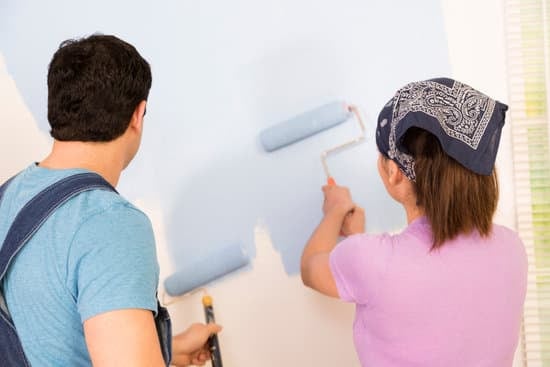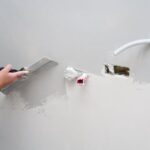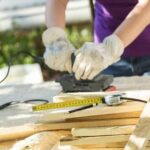Improving one’s dance technique is a crucial aspect of becoming a skilled and accomplished dancer. Whether you are a beginner just starting out or an experienced dancer looking to refine your skills, dedicating time to enhancing your technique can greatly elevate your performance. The good news is that you don’t need access to a professional studio or expensive equipment to work on your dance technique – you can do it right in the comfort of your own home.
By honing your dance technique at home, you have the opportunity to focus on specific areas that need improvement and tailor your practice routine to suit your individual needs. It allows for flexibility in scheduling and eliminates any constraints that may come with attending regular dance classes or workshops. Improving your dance technique at home not only helps you progress faster but also increases your confidence and overall enjoyment of dancing.
Whether you are a ballet dancer striving for perfect pirouettes, a hip-hop enthusiast looking to enhance your isolations, or a ballroom dancer working on smoother transitions, the benefits of refining your dance technique at home are immense. In the following sections, we will explore various strategies and exercises that can help you improve different aspects of your dance technique right from the comfort of your own home.
So, let’s dive in and discover how you can take your dancing abilities to new heights.
Assessing your current level of dance technique
One way is to record yourself dancing and watch the footage critically. This will allow you to see how well you execute different movements, transitions, and overall performance. Take note of any weaknesses or areas that need improvement. Another method is to seek feedback from a knowledgeable dance instructor or experienced dancer. They can provide valuable insight into your technique and offer suggestions for improvement.
In addition, self-assessment exercises can help you understand where you currently stand with your dance technique. These exercises may include balance tests, strength tests, or coordination exercises specific to your style of dance. By conducting these assessments regularly, you can track your progress over time and make adjustments to your practice routine as needed.
| Assessment Method | Description |
|---|---|
| Video Recording | Record yourself dancing and review the footage to identify areas for improvement. |
| Feedback from Instructor | Seek expert advice from a dance instructor or experienced dancer to get valuable insights into your technique. |
| Self-Assessment Exercises | Complete balance tests, strength tests, and coordination exercises tailored to your dance style. |
Assessing your current level of dance technique enables you to have a clear understanding of where you stand in terms of skill and ability. It serves as a foundation for setting realistic goals and creating an effective practice routine that targets specific areas in need of improvement.
By regularly reassessing your technique, you can track your progress and adjust your practice routine to ensure continuous growth and development. So take the time to assess your current level of dance technique and start your journey towards improvement.
Setting goals and creating a practice routine for improvement
Setting goals and creating a practice routine are essential steps in improving your dance technique at home. Without clear objectives and a structured plan, it can be easy to get off track or feel overwhelmed. This section will provide guidance on how to set effective goals and create an organized practice routine that will help you make significant progress in your dance technique.
Firstly, it’s important to establish specific and measurable goals for yourself. Rather than simply aiming to “improve your dance technique,” break down your goals into smaller, more attainable targets. For example, if you struggle with balance, your goal might be to hold a certain ballet pose for a specific duration of time without wavering.
Once you have identified your goals, it’s crucial to create a practice routine that incorporates regular and focused sessions dedicated to improving the specific areas you want to work on. Consistency is key when it comes to progression in any skill. Consider dedicating a certain amount of time each day or week specifically for technique training. Set aside distractions and create an environment that allows you to fully focus on your practice.
To help you visualize your progress and stay motivated, consider keeping track of your practice sessions and recording any improvements or breakthroughs. This could be as simple as keeping a journal or utilizing technology such as apps or online platforms designed for dancers.
In summary, setting clear goals and creating a structured practice routine will greatly contribute to improving your dance technique at home. By breaking down larger objectives into smaller ones, consistently practicing focused exercises related to those goals, and tracking your progress along the way, you can ensure that you are continuously moving forward in your dance journey.
| Setting Goals | Creating Practice Routine |
|---|---|
| – Establish specific and measurable goals | – Dedicate regular focused sessions for technique training |
| – Break down larger objectives into smaller, attainable targets | – Set aside distractions and create a focused environment |
| – Visualize progress and stay motivated by tracking improvements | – Consider using apps or online platforms to record practice sessions |
Warm-up exercises to prepare your body for dance at home
Warming up your body before starting any dance practice at home is crucial to prevent injury and optimize performance. Here are some recommended warm-up exercises to help prepare your body for dance:
Cardiovascular Warm-up
Engaging in cardiovascular warm-up exercises raises your heart rate, increases blood flow, and warms up the muscles throughout your body. Options for cardiovascular warm-ups at home include brisk walking or jogging in place, jumping jacks, or dancing to an upbeat song. Aim for 5-10 minutes of continuous movement.
Joint Mobility Exercises
Performing joint mobility exercises helps to increase the range of motion and flexibility in your joints, reducing the risk of injuries such as strains or sprains. Examples of joint mobility exercises include ankle circles, wrist rolls, shoulder rotations, and hip rotations. Start with gentle movements and gradually increase the intensity.
Dynamic Stretching
Dynamic stretching involves controlled movements that mimic dance actions to improve flexibility and prepare your muscles for dancing. Some dynamic stretches suitable for a warm-up routine can include leg swings, arm swings, side lunges with a reach overhead, or trunk rotations. Remember not to push yourself too hard during dynamic stretching; it should be comfortable and never painful.
Core Activation
A strong core is essential for balance, stability, and overall control during dance movements. Incorporate core activation exercises into your warm-up routine such as planks (on forearms or extended arms), Russian twists, or bicycles. Focus on engaging the abdominal muscles while maintaining proper form.
By incorporating these warm-up exercises into your pre-dance routine at home, you can ensure that your body is properly prepared for the demands of dance practice. Remember to listen to your body and modify any exercise if needed to avoid strain or injury. Taking the time for a thorough warm-up will not only enhance your dance technique but also contribute to long-term progress and overall enjoyment of dance.
Strengthening exercises to enhance your dance technique
Strengthening your body is crucial for enhancing your dance technique. By building strength, you will be able to execute movements with more control, precision, and power. Here are some key strengthening exercises that you can incorporate into your at-home practice routine:
Core Exercises
A strong core is essential for maintaining stability and balance in dance. Incorporate exercises such as planks, sit-ups, Russian twists, and bicycle crunches to target your abdominal muscles and obliques. These exercises will not only improve your posture but also enhance your ability to maintain proper alignment during various dance movements.
Leg and Glute Exercises
Strong and powerful legs are fundamental for executing jumps, leaps, turns, and various footwork in dance. To strengthen your legs and glutes, include exercises like squats, lunges (forward, reverse, and lateral), calf raises, donkey kicks, and fire hydrants into your routine. You can also utilize resistance bands or ankle weights to add extra challenge and resistance.
Upper Body Exercises
Although dance primarily focuses on the lower body, having a strong upper body can greatly contribute to improving overall dance technique. Include exercises such as push-ups (standard or modified), tricep dips using a chair or step stool, shoulder presses with dumbbells or household objects of equivalent weight, and bicep curls to strengthen your arms, chest muscles, shoulders, and back.
Plyometric Exercises
Plyometric exercises involve explosive movements that help improve power and agility in dance. Incorporate exercises like squat jumps, tuck jumps, burpees (with or without push-ups), lateral bounds, and high knee jogs into your routine. These exercises will not only increase muscular strength but also enhance endurance.
Remember to start with an appropriate number of repetitions and gradually increase the intensity and volume of your exercises as your strength progresses. It is important to maintain proper form and alignment throughout each exercise to minimize the risk of injury.
Seeking guidance from a dance instructor or fitness professional can also be beneficial in ensuring you are performing exercises safely and effectively. By incorporating these strengthening exercises into your at-home practice routine, you will see improvements in your dance technique over time.
Tips for maintaining proper form and alignment during dance practice at home
Proper form and alignment are essential for dancers to execute movements efficiently, prevent injuries, and express themselves artistically. When practicing dance at home, it can be challenging to maintain proper form without the guidance of a teacher or a studio environment. However, with these tips, you can still work on maintaining good form and alignment during your at-home dance practice.
Firstly, it is crucial to have an understanding of correct posture. Stand tall with your shoulders back, core engaged, and spine elongated. Imagine a string pulling you upward from the top of your head, creating space between each vertebra. This alignment will help you maintain balance and stability while performing various dance moves.
Next, focus on your body placement throughout different exercises. For example, in ballet tendus or battements, be mindful of keeping your hips square and facing forward while extending your leg to the side or to the front. Avoid rotating or twisting your hips as this can lead to improper technique and potential injuries.
In addition to posture and body placement, paying attention to the alignment of different body parts is crucial. For instance, in jazz or contemporary dance styles that involve jumps and leaps, make sure that your knees are aligned over your toes when landing from a jump or executing a grand jete. This will reduce the risk of strain on your knee joints.
| Tips for Maintaining Proper Form | Tips for Maintaining Alignment |
|---|---|
| 1. Focus on correct posture | 1. Keep hips square in exercises like tendus |
| 2. Engage core muscles for stability | 2. Align knees over toes when jumping/landing |
| 3. Visualize elongating the spine | 3. Avoid rotating or twisting hips in movements |
Remember, it is always helpful to have a mirror during your dance practice at home to check your alignment and form visually. Additionally, recording yourself while practicing can provide valuable feedback for self-assessment and improvement.
By implementing these tips into your at-home dance practice sessions, you can make significant strides in maintaining proper form and alignment. Alongside consistent practice, proper form will enhance your overall dance technique and help you progress as a dancer.
Incorporating flexibility exercises to improve your range of motion
Improving your range of motion is crucial for enhancing your dance technique. Flexibility exercises help to increase the length and elasticity of your muscles, allowing you to move more freely and with greater control. By incorporating these exercises into your at-home practice routine, you can improve your flexibility and ultimately enhance your dance performance.
To incorporate flexibility exercises into your dance practice at home, consider the following:
- Stretching: Begin each practice session with a series of dynamic stretches to warm up your muscles. These stretches should target all major muscle groups used in dance, such as the legs, hips, back, and shoulders. Perform movements like lunges, leg swings, and arm circles to gradually increase your range of motion.
- Yoga or Pilates: Incorporate a yoga or Pilates routine into your practice schedule. These disciplines focus on building strength, balance, and flexibility through a series of controlled movements and static poses. Look for online classes or tutorials that are specifically designed for dancers to address their unique needs.
- Resistance Bands: Use resistance bands to assist in stretching and improve flexibility in specific areas of the body. For example, use a band to aid in stretching the hamstrings by looping it around your foot while lying on the ground and gently pulling towards you.
- Active Isolated Stretching: This technique involves holding each stretch for only a short duration (about 2 seconds) before releasing it and then repeating the stretch multiple times. Active isolated stretching helps increase flexibility without causing excessive stress on the muscles.
Remember that it is important to always listen to your body when performing flexibility exercises. Avoid pushing yourself too hard or forcing a stretch beyond what feels comfortable. Consistency is key when working on improving flexibility, so aim to incorporate these exercises into your practice routine regularly.
By incorporating these flexibility exercises into your at-home dance practice routine, you can gradually improve your range of motion over time and enhance overall dance technique. Flexibility is not only important for achieving beautiful lines and movements but also for preventing injuries. So, take the time to incorporate these exercises into your practice routine and reap the benefits in your dance performance.
Practicing drills and exercises specific to your dance style to refine technique at home
Practicing drills and exercises specific to your dance style is crucial for refining your technique at home. By focusing on the specific movements and skills required in your chosen dance style, you can improve your performance and artistry. Here are some tips on how to incorporate these drills and exercises into your practice routine:
- Research your dance style: Begin by understanding the key elements of your dance style. Whether it’s ballet, hip hop, contemporary, or any other genre, familiarize yourself with the fundamental techniques and movements that define it.
- Break down the movements: Once you have a clear understanding of the basic elements of your dance style, break down each movement into smaller components. Focus on perfecting each part individually before putting them all together.
- Create a drill sequence: Design a series of drills and exercises that target specific aspects of your dance technique. For example, if you are practicing ballet, you can create a drill sequence that emphasizes turns, jumps, or balance exercises. Make sure to prioritize areas where you need improvement while also including exercises for overall skill development.
- Incorporate repetition and variation: Repetition is key when it comes to refining technique in dance. Practice each drill multiple times to build muscle memory and improve precision. Additionally, vary the speed, intensity, and direction of the drills to challenge yourself and enhance versatility in your dancing.
- Use props or improvised tools: Get creative with props or improvised tools that mimic elements specific to your dance style. For example, if you are a salsa dancer, use a chair as a partner substitute for practicing spins or body rolls. This can help simulate real-life scenarios encountered during performances.
- Seek feedback: Record yourself performing the drills and exercises so that you can review them later and identify areas for improvement. Consider seeking feedback from experienced dancers or instructors who specialize in your chosen dance style.
By consistently practicing drills and exercises relevant to your dance style, you can refine your technique and elevate your performance level. Remember to listen to your body and avoid pushing yourself too hard, as this can lead to injury. With dedication and regular practice, you will see improvement in your dance technique from the comfort of your own home.
Utilizing online resources and dance tutorials to supplement your at-home practice
In today’s digital age, there is a wealth of online resources and dance tutorials that can greatly supplement your at-home practice. These resources provide an opportunity to learn from renowned dancers and instructors, gain new insights, and expand your repertoire without leaving the comfort of your own home. Here are some ways you can utilize these resources to enhance your dance technique:
- Online classes: Many dance studios and professional dancers offer online classes that cater to different levels and styles of dance. These classes are often structured and taught by experienced instructors who provide step-by-step guidance on technique, choreography, and style. Participating in these online classes allows you to receive valuable instruction while honing your skills at home.
- Video tutorials: Video tutorials can be found on various platforms such as YouTube or dedicated dance websites. These tutorials break down specific techniques or steps in detail, allowing you to study the movements closely and practice them at your own pace. You can find tutorials for any dance genre or skill level, making it a versatile tool for improving your technique.
- Virtual workshops: Virtual workshops are a great way to connect with dance professionals from around the world. These workshops typically involve live-streamed sessions where dancers demonstrate and teach specific techniques or combinations. Participating in virtual workshops not only exposes you to different teaching styles but also allows you to interact with other passionate dancers who share similar goals.
- Online forums and communities: Engaging with like-minded individuals in online dance forums or communities provides an avenue for exchanging ideas, seeking advice, and receiving feedback on your progress. Joining these communities gives you the opportunity to connect with fellow dancers who may inspire you, provide valuable tips, or even become practice buddies.
- Performance videos: Watching professional performances can be an effective way to understand the technical execution, artistry, and expression required in various dance styles. Studying performance videos enables you to observe the finer details of footwork, body alignment, and musicality, and incorporate them into your own practice.
By utilizing online resources and dance tutorials, you can gain access to a wide range of instruction, inspiration, and feedback that will enrich your at-home dance practice. Remember to take advantage of these resources in a balanced and focused manner, incorporating them into your routine while also dedicating time for personal exploration and creativity. Combined with consistent practice and dedication, these tools will help you improve your dance technique and reach new heights in your dancing journey.
Tracking progress and adjusting your practice routine over time
Tracking progress is a crucial step in improving your dance technique at home. By monitoring your progress, you can identify areas of improvement, celebrate milestones, and make necessary adjustments to your practice routine. Here are some tips on how to effectively track your progress and adjust your practice routine over time.
Set specific and measurable goals
Before you begin tracking your progress, it is important to set clear and specific goals. Instead of setting vague goals like “improve my dance technique,” create measurable objectives such as “increase my flexibility by 2 inches in one month” or “master a specific dance move within three weeks.” These specific goals will provide you with a clear direction and help you measure whether you are making progress or not.
Record yourself regularly
Recording yourself while practicing can be an invaluable tool for tracking progress. Use your smartphone or a camera to record your dance sessions at regular intervals, such as once a week or every two weeks. Take note of any improvements or areas that still need work when reviewing the footage. It may also be helpful to compare older recordings with more recent ones to see how far you have come.
Keep a journal or progress log
Create a journal or progress log where you can document your daily or weekly practice sessions. Include details such as the exercises you practiced, the duration of each session, and any observations about your technique or challenges faced during practice. This log will not only help you remember what you have worked on, but it will also allow you to reflect on your progress over time and identify patterns or trends in your improvement.
Seek feedback from others
Ask for feedback from experienced dancers or instructors who can provide valuable insights into areas that need improvement. They may offer advice on refining certain techniques, suggest additional exercises to target weak spots, or give tips on how to overcome specific challenges. Having an outside perspective can provide a well-rounded assessment of your progress and help you make informed adjustments to your practice routine.
Adjust and diversify your practice routine
Based on the feedback received and the progress you have made, it is essential to regularly adjust and diversify your practice routine. Update your goals as you reach them, add new exercises or drills to target specific areas for improvement, and vary the intensity or duration of your sessions. By continually challenging yourself and varying your training, you will continue to see growth in your dance technique.
Tracking progress and adjusting your practice routine are fundamental aspects of improving dance technique at home. By setting measurable goals, utilizing recording devices, keeping a progress log, seeking feedback from others, and adjusting your routine as needed, you can stay motivated, monitor growth, and continue refining your dance skills over time. Remember that consistency is key – dedicating regular time to practice will yield the best results in improving your dance technique at home.
Conclusion
In conclusion, consistent practice and dedication are crucial for improving dance technique at home. It is important to remember that improvement takes time and effort, and there are no shortcuts to becoming a better dancer. By assessing your current level of dance technique, setting goals, and creating a practice routine, you can effectively work towards enhancing your skills.
Warm-up exercises are essential to prepare your body for dance and prevent injuries. By incorporating strengthening exercises into your routine, you can improve muscle control and overall strength, leading to better technique in your dances. It is also imperative to maintain proper form and alignment during practice sessions, as this will help with executing movements correctly and efficiently.
Flexibility exercises should not be overlooked as they play a significant role in improving range of motion. Proper stretching techniques can improve your lines, extensions, and overall fluidity in dancing. Additionally, practicing drills and exercises specific to your dance style will allow you to refine technique at home.
Utilizing online resources such as tutorials and video demonstrations can provide valuable guidance when practicing at home. These resources offer professional insight and tips that can help you address specific areas of improvement. Lastly, tracking progress through regular self-assessment and adjusting your practice routine accordingly will ensure continuous growth.
Frequently Asked Questions
How can I improve my dancer technique?
Improving dancer technique requires a combination of consistent practice, attention to detail, and seeking feedback from professionals. First and foremost, it is essential to establish a solid foundation by mastering the basic techniques of dance. This involves focusing on proper alignment, posture, balance, and executing movements with precision.
Regular practice is crucial here, as repetition enables muscle memory to develop and allows for gradual improvement over time. Additionally, dancers should pay close attention to their body awareness and work on refining their movement quality by understanding the mechanics behind each step or move. Seeking feedback from experienced dancers or instructors can provide valuable insights into areas that need improvement or correction, ultimately contributing to the overall refinement of dancer technique.
What are the 4 strategies to improve dance?
There are four strategies that can be employed to improve dance skills effectively. The first strategy is setting specific goals for oneself – whether it’s mastering a particular dance style or perfecting a challenging routine – this provides direction and motivation for continuous growth. Secondly, diversifying training is important in order to gain exposure to various styles of dance and different teaching methods.
Taking classes in multiple disciplines helps expand range and versatility as a dancer. The third strategy involves consistent practice and discipline – establishing a regular training schedule ensures dedicated time for skill development while building stamina and strength. Lastly, seeking opportunities for performance can greatly enhance one’s dancing abilities; participating in showcases or joining dance groups fosters confidence, stage presence, and adaptability.
How can I practice dance moves at home?
Practicing dance moves at home doesn’t require a large amount of space or fancy equipment; instead, it necessitates dedication and creativity. To begin with, it is crucial to set aside regular practice time where distractions are minimized so that focus can be fully directed towards dancing. Setting up a mirror can be immensely helpful since it allows dancers to observe their form and make necessary adjustments accordingly.
Utilizing online resources such as tutorial videos or virtual dance classes provides guidance when practicing at home alone – these videos break down movements step by step, allowing for better comprehension and execution. Furthermore, working on conditioning exercises such as stretching, strength training, and cardiovascular activities can significantly improve overall dance technique. Finally, it’s important to remember that practicing repetition is key – whether it’s perfecting a simple combination or fine-tuning intricate footwork – consistency and persistence are essential in order to see progress.

I’m thrilled to have you here as a part of the Remodeling Top community. This is where my journey as an architect and remodeling enthusiast intersects with your passion for transforming houses into dream homes.





